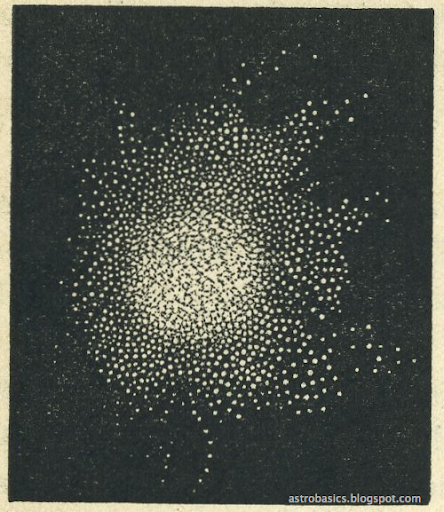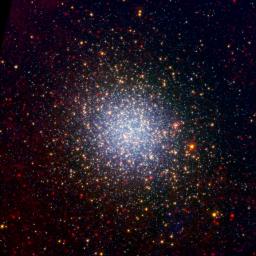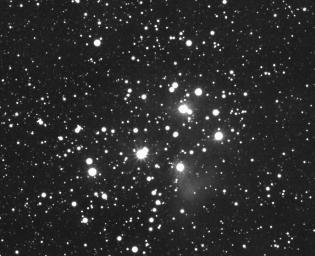
Drawing of Hercules Cluster M-13 from Recreations in Astronomy by H.W. Warren, D.D., 1896
Globular clusters are like mini-galaxies. They orbit their host galaxy, but to some degree are separate from it. The globular clusters in the Milky Way orbit the core of the galaxy, or around the rim. This means that they are well distributed through the sky, but lots of them are visible when looking toward the center of the galaxy (in Sagittarius, the Archer.)
Bright, Easy Objects
Globular Clusters are bright and easily seen even on nights when other objects like galaxies and nebulas are washed out by moonlight, light overcast, or city lights. You can see them in binoculars, it doesn't take a telescope to enjoy them. I had a hobby for a couple of years of seeing how many globulars I could see with 7x35 binoculars. I collected over 40 before I got a new telescope and stopped looking regularly.
Any telescope with a good mount can do a good job of showing off the bright globular clusters. If you have a telescope of 12" (250mm) or greater aperture, you can observe globular clusters in other galaxies as well as those in the Milky Way. The Andromeda galaxy (M31) and the galaxy in the Triangle (M-33) make good targets for extra-galactic globular hunting.
What to Look For
When you observe a globular, it's interesting to look for a few things. First, see how far out the globular's stars appear to go. Then, notice how quickly the cluster seems to go from outlying individual stars to the tight, dense knot of stars at the center. This is called the "condensation" of the cluster. Does it condense rapidly, or slowly, or does it have scattered stars up to a certain point then suddenly appear to become a solid globe of stars?
Next look at the overall appearance of the globular. Does it have wispy tendrils of stars? Does it look like a patch of mist? Does it look like a glowing ball of jewels? Or what?
Makes notes of your observations. It's interesting to compare and contrast different globulars, as well as to see how different they appear in different observing instruments.
Famous Globulars
Here are a few of the globulars most popular with amateur observers:
M-13, the Hercules Cluster, is visible with just your eyes under dark skies. It's in the Keystone which makes it easy to find.
M-2 in Aquarius is a beautiful object in binoculars or telescopes.
M-4 in Scorpius is also visible in a dark sky, it's near Antares, which makes it easy to find.

Omega Centauri is large and bright. It lies far to the south for mid-northern latitudes, but is a great object for binoculars and telescopes when it is visible.

Globular Cluster M-80, one of the densest clusters.




